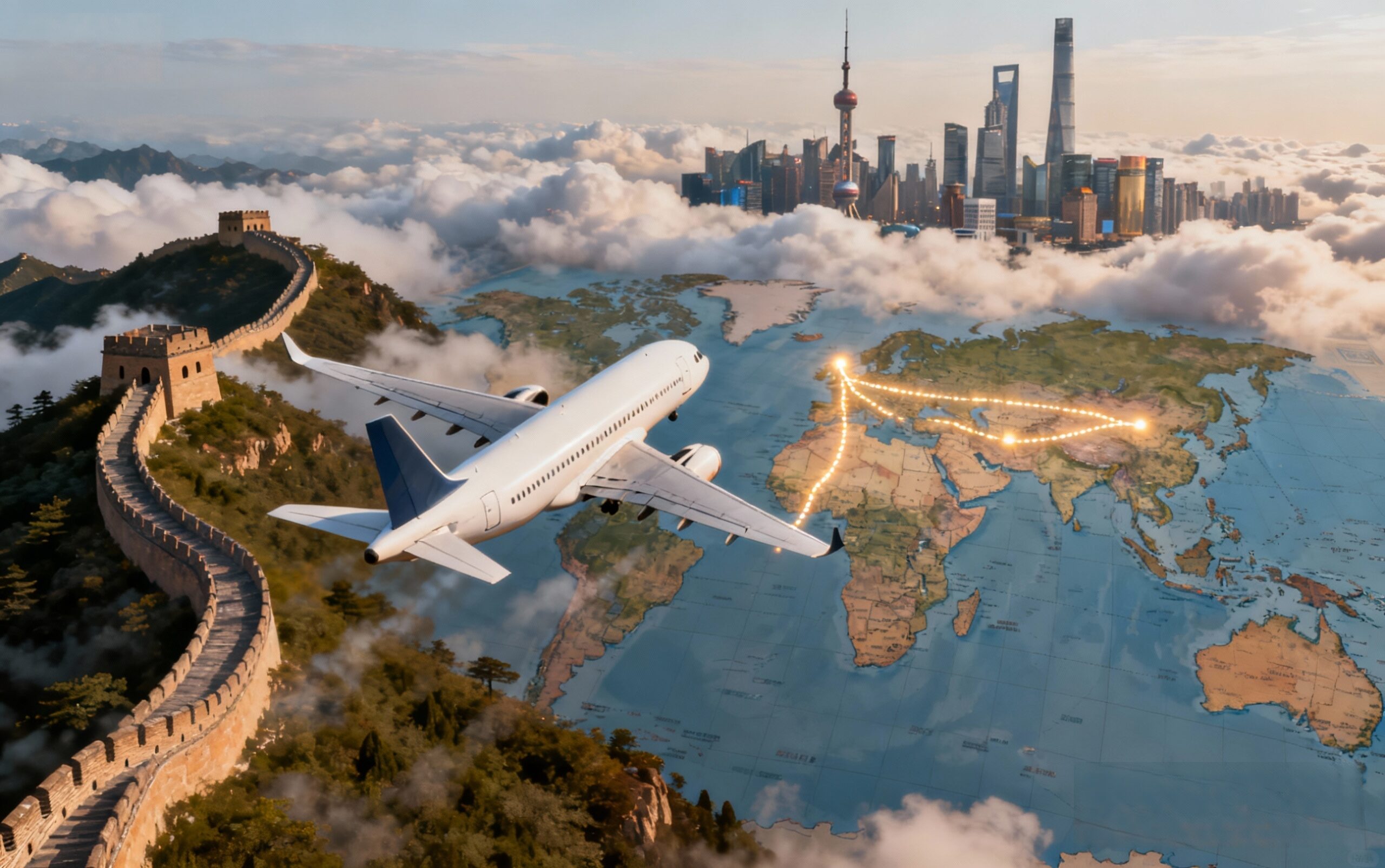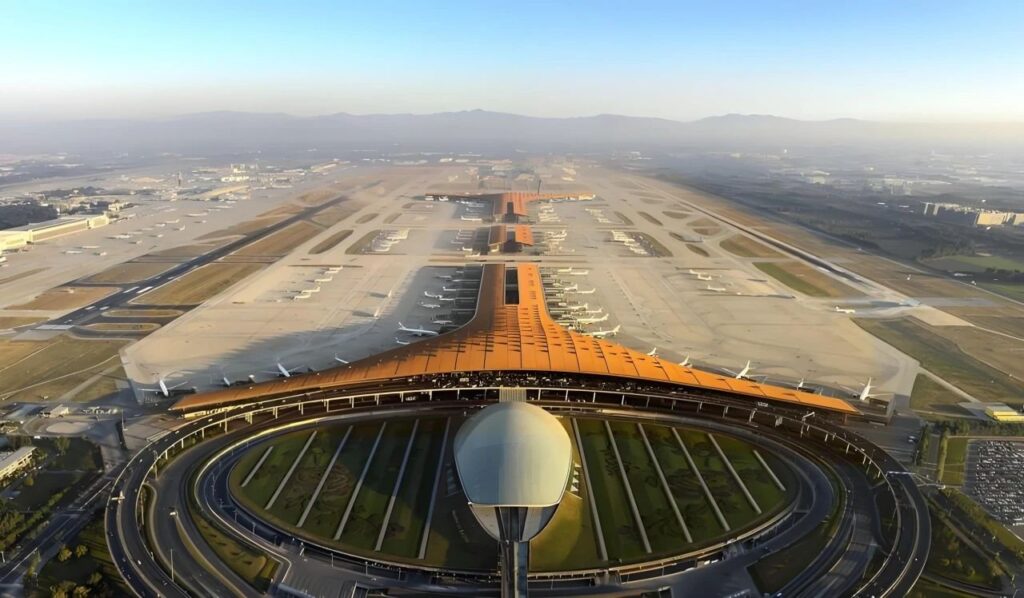Flights to China: Ultimate Guide for International Travelers
Welcome to Travel China With Me. We are a team of China travel experts. For over two decades, we have specialized in one thing: crafting seamless, unforgettable journeys through China. We know that for many international travelers, the very first step—booking the flight—can feel like the biggest challenge.
You have questions. We hear them every day. Do I need a visa? Which city should I fly into? What’s the difference between Beijing’s two airports? How do I even start?
The landscape of travel to China has changed. It changed more in the last two years than in the previous twenty. The rules are new. The airports are new. And the opportunities are incredible.
This is not another generic list of airlines. This is our expert-level, 7,500-word strategy guide. We have guided thousands of travelers, just like you. We’ve taken them from that first “what if” moment to standing on the Great Wall. We will share our direct experience. We’ll share our clients’ stories. And we’ll share the “insider” tips that other guides miss.
We will focus on unique, helpful information. We want to solve your real problems, not just add to the noise. Let’s get you to China.
Table of Contents
Why Fly to China Now — and How to Pick Your Entry Airport

The Reopening Momentum You Need to Know
In the third quarter of 2025, foreign nationals made 7.246 million visits to China under visa-free travel policies, a 48.3% year-on-year increase, with visa-free entries accounting for 72.2% of all foreign arrivals. This surge isn’t marketing hype—it reflects China’s genuine reopening commitment.
China extended its unilateral visa-free policy for citizens of 48 countries until December 31, 2026, effective November 10, 2025, with Sweden, Saudi Arabia, Oman, Kuwait, Bahrain, and Russia joining the list. This policy allows stays up to 30 days for business, tourism, visiting relatives, exchange visits, and transit.
The aviation infrastructure supports this momentum. In May 2025, United Airlines operates 21 weekly flights from the US to China, while China-based carriers plan 127 weekly flights during the same month. More capacity means better prices and more flight options than we’ve seen since 2019.
Shanghai vs. Beijing: The Entry Gateway Decision
Most first-timers wrestle with this choice. Here’s what actually matters:
Shanghai’s Dual Airport System
Shanghai operates two major airports causing genuine confusion for newcomers.
Shanghai Pudong (PVG) is the primary international gateway, expanding international reach to 90 destinations in 2024, including key global hubs and regional points. Pudong sits about 30 kilometers from city center. Transport options include Maglev train (8 minutes to Longyang Road, 50 RMB), taxi (40-50 minutes, 150-200 RMB), or Metro Line 2 (slower but cheaper).
Shanghai Hongqiao (SHA) focuses on domestic flights and short-haul international routes (Japan, South Korea, Hong Kong). Located just 13 kilometers west of downtown, travel time to city center is only 20 minutes by taxi (40-60 RMB).
Real traveler insights from FlyerTalk: “SHA is closer to town. PVG is way out in the sticks.” Another adds: “If you are a tourist, avoid staying in Pudong area, east side of river. The city centers and most attractions are on the west side of river.”
Our recommendation: Fly into Pudong for international arrivals, but book domestic connections from Hongqiao when possible for easier city access. Shanghai offers easier navigation than Beijing for first-timers, with famous tourism cities like Beijing, Xi’an and Guilin easily accessible via high-speed rail.
DIG DEEPER: Shanghai Airport Guide: Pudong or Hongqiao – Which Should You Choose?
Beijing’s Airport Choice
Beijing Capital International Airport is China’s seasoned professional gateway with well-organized systems, plenty of staff, and strong transport links. The airport express train gets you downtown in under 30 minutes.
Beijing Daxing International Airport is the newer starfish-shaped marvel designed for flow. Everything features short walking distances, natural light, and intuitive bilingual signs. Current data shows Beijing Daxing averaging 13 minutes total wait time with 16 minutes at check-in and 9 minutes at immigration.
The catch? Daxing sits farther from central Beijing. Choose Daxing for connections to southern or western China. Stick with Capital for central Beijing access and connections to northern China.
User experience from FlyerTalk: “Even though I prefer Shanghai from a quality of life standpoint, Beijing wins hands down if you are forced to choose one or the other for a quick sampling.” Another notes: “I found Shanghai to be much more digestible on a short trip with an interesting mix of modern Chinese and European architecture that was easily walkable.”
DIG DEEPER: Capital or Daxing Airport? The Ultimate Beijing Airport Guide
Secondary Cities Worth Serious Consideration
Beijing, Shanghai, Hong Kong, Guangzhou and Chengdu take over 80 percent of passenger shares to and from China. But secondary cities offer compelling advantages:
Chengdu: United flies San Francisco to Chengdu, putting you immediately in western China near pandas and Tibetan culture. Chengdu Tianfu Airport ranks in Skytrax’s top 10 Chinese airports for 2025. One traveler raved: “All of the panda artwork everywhere is making me like Chengdu the best.”
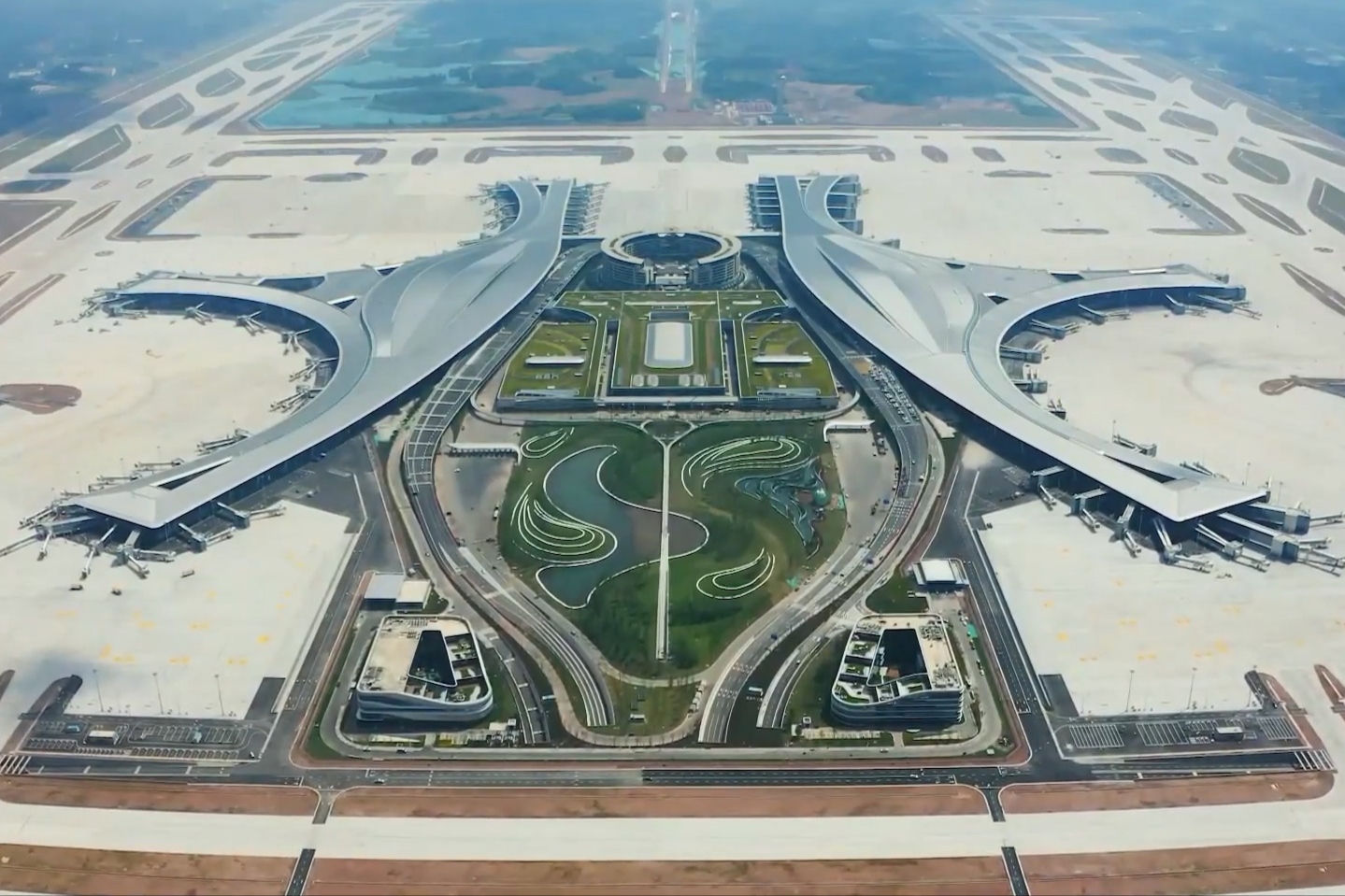
Guangzhou: Guangzhou Baiyun Airport ranked #1 in Skytrax’s 2025 China airport rankings. Less crowded than Beijing or Shanghai, with excellent connections to Guilin, Yangshuo, and Hong Kong. Perfect for southern China exploration.
Shenzhen: Shenzhen Bao’an Airport ranks #3 in 2025 for efficiency and connectivity. Ideal gateway for southern China with immediate access to Hong Kong.
Hong Kong: Hong Kong International Airport remains one of Asia’s premier aviation hubs with connections to virtually every major city worldwide. While technically a Special Administrative Region with separate entry requirements, Hong Kong serves as an excellent gateway for exploring southern China with easy access to Shenzhen, Guangzhou, and Macau.
Xi’an: Xi’an Xianyang International Airport works perfectly if your itinerary focuses on Terracotta Warriors, Silk Road sites, and northwestern China. Direct flights from several Asian hubs.
Choose based on your itinerary—not airport reputation. A Chengdu arrival makes perfect sense if you’re planning Sichuan, Tibet, and Yunnan exploration. Flying into Shanghai when your itinerary focuses on Beijing and Xi’an wastes time and money on positioning flights.
Pre‑Booking: What to Know Before You Hit “Purchase”
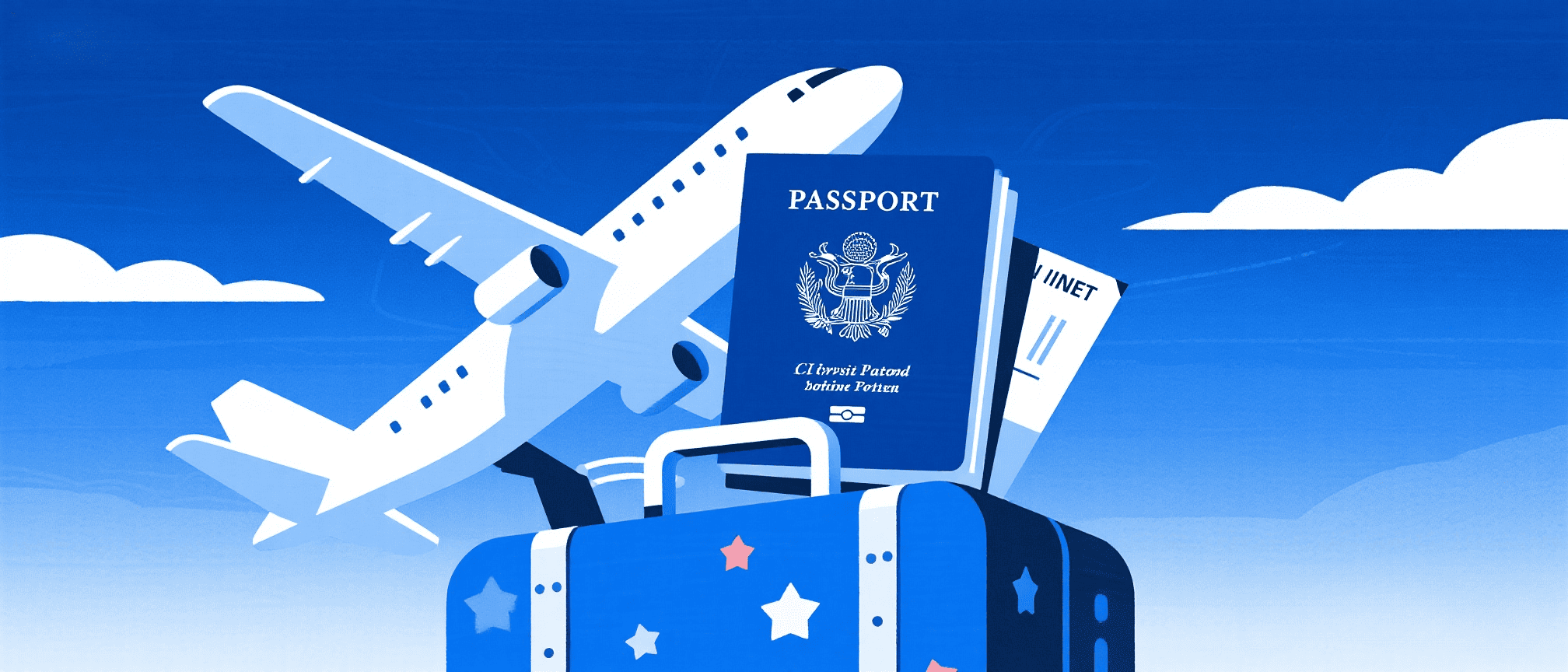
Understanding Your Visa Situation
Your visa eligibility determines your flight booking strategy. Here’s the complete breakdown:
48-Country 30-Day Visa-Free Policy
Nationals holding valid ordinary passports from 48 countries are exempted from visa requirements if coming to China for business, tourism, family visits, exchange, and transit: Brunei, France, Germany, Italy, Spain, Netherlands, Switzerland, Ireland, Hungary, Austria, Belgium, Luxembourg, New Zealand, Australia, Poland, Portugal, Greece, Cyprus, Slovenia, Slovakia, Norway, Finland, Denmark, Iceland, Andorra, Monaco, Liechtenstein, South Korea, Bulgaria, Romania, Croatia, Montenegro, North Macedonia, Malta, Estonia, Latvia, Japan, Brazil, Argentina, Chile, Peru, Uruguay, Saudi Arabia, Oman, Kuwait, Bahrain, Russia, and Sweden.
Critical requirements:
- Passport validity must exceed your planned departure date by at least 6 months
- Must present confirmed return or onward tickets proving you’ll leave within 30 days
- Airlines check this before boarding—screenshots won’t work; need booking confirmation showing passenger name and dates
- Stay ends at midnight on the 30th day after entry
- Only ordinary passports qualify—diplomatic, official, or service passports require standard visa applications
DIG DEEPER: 30-Day Visa-Free Policy in China: Everything You Need to Know
240-Hour Transit Visa for 55 Countries
The old 72-hour and 144-hour policies merged into one 240-hour (10-day) visa-free transit program on December 17, 2024, now covering 55 countries and 60 ports across 24 provinces.
Eligible countries include all 48 countries above, plus USA, Canada, UK, Indonesia, and others. The complete list includes 40 European countries, 6 Americas countries, 6 Asia countries, and 2 Oceania countries.
What competitors don’t explain: The 240-hour period starts at midnight (00:00 GMT+8) the day after you arrive. Land at 1 PM on April 20? Your countdown begins at midnight April 21. This quirk gives you nearly 11 actual days.
The transit visa requires flying from Country A through China to Country C (must be different). Tokyo to Beijing to Bangkok works. New York to Shanghai to New York doesn’t. You must present your international travel document, onward ticket to a third country with confirmed seat and date within 240 hours, and completed arrival/departure card.
Recent travelers report Beijing’s entry inspection has become more relaxed, with even 4 PM arrivals receiving airport exit approval—something rarely granted before.
DIG DEEPER: 240-Hour Visa-Free Transit Policy in China: Everything You Need to Know
Finding the Best Airlines: Real User Experiences

Hainan Airlines: The Real Story
Hainan Airlines ranked 10th globally in the 2025 Skytrax World Airline Awards, achieving the only top-ten position among Chinese airlines. The airline holds the only mainland Chinese airline Skytrax 5-Star rating and was voted the number 1 airline in China for 2024.
Real passenger experiences: “Travelers praised Hainan’s well-maintained aircraft, delicious food, and professional cabin management, with pilots frequently sharing flight updates.” The airline has accumulated over 5 million hours of safe flights since 1993 and was listed as one of world’s top 5 safest airlines by JACDEC in February 2016.
The reality check: Some passengers found business class configured 2-2-2 (not convenient for solo travelers) with limited entertainment systems worse than budget carriers. Customer service operates primarily in Chinese, making communication difficult. Many report canceled flights with minimal English support.
A March 2025 passenger shared: “I paid £440 for Manchester to Osaka via Beijing return flights when London routes weren’t competitive.” That’s the Hainan sweet spot—competitive European-Asia pricing with acceptable service.
Business class features fully flat beds in a 1-2-1 layout ensuring direct aisle access on long-haul routes. But entertainment systems lag Emirates or Singapore Airlines significantly.
China Eastern and Air China: The Safe Bets
China Eastern stands out for Business Class with fully lie-flat seats and sliding doors creating private suite experiences. Their economy consistently delivers two full meals on long-haul flights, featuring both Chinese and Western options. Beverage options encompass juices, coffee, tea, soft drinks, beer, and wine.
Air China provides the most extensive domestic network. Flying to some third-tier city? Air China likely serves it from their Beijing hub without complicated multi-airline connections.
Trade-offs? Both carriers’ in-flight entertainment lags Emirates or Singapore Airlines, and cabin crew English proficiency varies dramatically by route. But for value-conscious travelers, these carriers deliver solid experiences at 30-40% lower prices.
We tell budget-conscious clients: save the money for experiences in China. Tell luxury travelers: Chinese business class offers incredible value, often costing 40% less than American carriers for similar service.
DIG DEEPER:
United Airlines and Delta: The Western Standard
United operates 21 weekly flights from the US to China in May 2025: daily Los Angeles to Shanghai, daily San Francisco to Beijing, and daily San Francisco to Shanghai. Delta runs daily Seattle-Shanghai and Detroit-Shanghai flights with plans to restore Los Angeles-Shanghai service later in 2025.
Both offer familiar Western service standards and easier customer service in English. Worth the premium if flight issues arise and you need rebooking assistance.
Critical insight from United’s CFO: “We have an issue with Russian overflight right now. Chinese carriers can fly to the U.S. over Russia which is a much less circuitous route. We can’t—that makes flying from the East Coast and even from Chicago to China very difficult, if not impossible.”
This explains pricing differences. Chinese carriers using Russian airspace save 2-3 hours flight time and significant fuel costs, allowing lower fares of $200-400 compared to American carriers.
International Carriers: Premium Options
Turkish Airlines’ Istanbul routing allows 72-hour layovers for exploring Turkey. We’ve used this for clients wanting to break up the long journey between continents.
Singapore Airlines and Cathay Pacific deliver premium service with convenient Asian hub connections, though you’ll pay 30-50% more than Chinese carriers on comparable routes. Their in-flight entertainment, cabin crew service, and overall experience rank among the world’s best.
Smart Booking Strategy: The 3-Step Method
Step 1: Research on Google Flights or Skyscanner Identify potential routes and baseline pricing 60-90 days before departure. Set price alerts. Don’t book yet.
Step 2: Cross-Check on Trip.com Check identical flights on Chinese platforms. The cheapest China flights are usually found on domestic Chinese platforms like Trip.com (English version of Ctrip) or TravelGo (English version of eLong).
Step 3: Direct Airline Comparison Visit the Chinese carrier’s website directly. Sometimes they undercut even Trip.com by another $50-100.
Real example we tested: Los Angeles to Shanghai search showed $1,100 on Kayak, $890 on Trip.com, $850 on China Eastern’s website. That’s $250 saved in 10 minutes.
Why? Chinese platforms access inventory Chinese carriers don’t always release to international distributors. They also don’t layer on the same service fees Western sites charge. Trip.com’s Price Calendar shows prices when you alter departure or return dates, making it easy to find the cheapest day to fly.
The Real Cost: Verified 2025 Pricing
Origin | Destination | Low Season | Peak Season | Best Day |
|---|---|---|---|---|
North America | ||||
Los Angeles | Shanghai | $585 | $1,200 | Tue/Wed |
Los Angeles | Beijing | $650 | $1,250 | Tue/Wed |
Los Angeles | Guangzhou | $640 | $1,180 | Tue/Wed |
Los Angeles | Chengdu | $750 | $1,350 | Tue/Wed |
New York (JFK) | Shanghai | $900 | $1,500 | Tue/Wed |
New York (JFK) | Beijing | $907 | $1,520 | Tue/Wed |
San Francisco | Beijing | $750 | $1,400 | Tue/Wed |
San Francisco | Shanghai | $720 | $1,380 | Tue/Wed |
San Francisco | Guangzhou | $680 | $1,350 | Tue/Wed |
Vancouver | Shanghai | C$895 | C$1,750 | Tue/Wed |
Vancouver | Beijing | C$920 | C$1,800 | Tue/Wed |
Toronto | Shanghai | C$1,100 | C$2,000 | Tue/Wed |
Europe | ||||
London | Beijing | £450 | £900 | Wednesday |
London | Shanghai | £500 | £950 | Wednesday |
London | Guangzhou | £480 | £920 | Wednesday |
Paris | Shanghai | €520 | €980 | Wednesday |
Paris | Beijing | €550 | €1,000 | Wednesday |
Frankfurt | Beijing | €550 | €1,020 | Wednesday |
Frankfurt | Shanghai | €530 | €990 | Wednesday |
Amsterdam | Shanghai | €540 | €995 | Wednesday |
Asia-Pacific | ||||
Sydney | Shanghai | A$850 | A$1,600 | Tuesday |
Sydney | Beijing | A$900 | A$1,700 | Tuesday |
Sydney | Guangzhou | A$870 | A$1,650 | Tuesday |
Melbourne | Shanghai | A$880 | A$1,650 | Tuesday |
Singapore | Shanghai | S$450 | S$850 | Wednesday |
Singapore | Beijing | S$480 | S$880 | Wednesday |
Singapore | Guangzhou | S$420 | S$800 | Wednesday |
Tokyo | Shanghai | ¥45,000 | ¥95,000 | Wednesday |
Tokyo | Beijing | ¥48,000 | ¥98,000 | Wednesday |
Seoul | Beijing | ₩580,000 | ₩1,200,000 | Tuesday |
Seoul | Shanghai | ₩550,000 | ₩1,180,000 | Tuesday |
Bangkok | Shanghai | ฿12,500 | ฿25,000 | Wednesday |
These represent actual fares found in recent 2025 searches across multiple booking platforms. Prices to secondary cities like Guangzhou, Chengdu, and Shenzhen often run $50-100 cheaper than Beijing or Shanghai from the same origin. The JFK to Shanghai route covers approximately 7,419 miles with round trip flights starting at approximately $900, and one-way options found for just over $500.
Flight Duration: What to Expect
Understanding flight times helps you plan connections and manage jet lag effectively. Here are verified direct flight times to major Chinese cities:
Origin City | Beijing | Shanghai | Guangzhou | Chengdu | Hong Kong |
|---|---|---|---|---|---|
North America | |||||
New York | 14h 48min | 15h 02min | 15h 30min | 15h 45min | 15h 50min |
Los Angeles | 12h 30min | 12h 00min | 13h 30min | 13h 15min | 14h 30min |
San Francisco | 12h 00min | 11h 45min | 13h 15min | 12h 45min | 13h 30min |
Vancouver | 11h 00min | 11h 30min | 12h 30min | 11h 45min | 12h 45min |
Toronto | 13h 30min | 14h 00min | 14h 30min | 14h 45min | 15h 30min |
Europe | |||||
London | 10h 30min | 11h 45min | 12h 00min | 11h 30min | 12h 30min |
Paris | 10h 00min | 11h 30min | 11h 45min | 11h 15min | 12h 15min |
Frankfurt | 9h 45min | 11h 15min | 11h 30min | 11h 00min | 12h 00min |
Amsterdam | 10h 00min | 11h 20min | 11h 40min | 11h 10min | 12h 10min |
Asia-Pacific | |||||
Tokyo | 3h 30min | 2h 45min | 4h 30min | 5h 00min | 4h 00min |
Seoul | 2h 15min | 2h 00min | 3h 30min | 4h 00min | 3h 15min |
Singapore | 5h 30min | 5h 15min | 4h 00min | 5h 00min | 3h 45min |
Sydney | 11h 30min | 10h 30min | 9h 00min | 10h 00min | 9h 15min |
Bangkok | 4h 00min | 3h 45min | 2h 30min | 3h 00min | 2h 45min |
Note: These are direct, non-stop flight times. Connecting flights typically add 3-8 hours depending on layover duration. US carriers avoiding Russian airspace add approximately 2-3 hours to routes from North America compared to Chinese carriers.
Booking Window: Data-Backed Timing
The cheapest time to book flights is usually 45 to 60 days before you fly, according to Skyscanner’s analysis. We’ve tested this repeatedly—booking 90-120 days out rarely delivers better prices, and last-minute bookings (under 30 days) cost 25-40% more.
Booking on Sunday instead of Friday saves between 6% and 13% on average, per Expedia data. Flying out on Wednesday or Tuesday offers the best options, while departing on Saturday tends to be most expensive.
Clear browser cookies or use incognito mode when booking. Some platforms adjust prices based on search history.
DIG DEEPER: How to Find Cheap Flights to China: Top Tips and Deals
Arrival Day: What to Expect & How to Navigate

Immigration Process: Step-by-Step
Starting November 20, 2025, foreign travelers can fill out entry information online through the National Immigration Administration website, smartphone, “NIA 12367” app, or WeChat/Alipay mini programs. Paper forms remain available during transition.
Standard visa-free entry process:
- Fill out arrival card – Available on the plane or at the airport. You’ll need basic details like name, passport number, flight information, and purpose for entering China. Make sure information matches your travel documents.
- Fingerprint registration – Before heading to the immigration counter, first-time visitors must register fingerprints at self-service kiosks. This process takes about 2-3 minutes.
- Go through immigration – Present your passport, arrival card to the immigration officer. They will take your photo and scan your fingerprints to confirm they match what’s in their system. The officer will stamp your passport with an arrival stamp.
- Standard visa-free entry averages 30 minutes through immigration during normal periods.
Transit visa processing reality:
Visa-Free Transit (TWOV) processing can take 45 minutes at Beijing Daxing International Airport, but can extend to 1.5 hours due to unclear signage and additional checks. At some airports, transit passengers must go to a desk labeled “Temporary Entry Permit” instead of a “TWOV” counter.
Transit visa processing takes 5-10 minutes per person, but queuing can add 30-90 minutes during peak arrival clusters. Beijing Daxing sometimes operates only one transit visa counter, meaning even efficient processing creates long queues.
Our solution: Upon arrival, ask airport staff immediately for “临时入境许可” (temporary entry permit) counter directions. Some airports label it “Temporary Entry Permit” instead of “TWOV.” Don’t waste time looking for non-existent signs.
Be among the first off the plane to beat the rush at transit visa counters, especially during peak hours (morning and early afternoon when multiple international flights cluster).
Customs Clearance Essentials
All inbound passengers entering China must complete the China Customs Baggage Declaration and declare truthfully. Inbound passengers who have nothing to declare shall choose the “Nothing to Declare Channel” (Green Channel).
You must declare:
- Foreign currencies in cash worth more than $5,000 USD
- Chinese Yuan (CNY) if carrying more than ¥20,000 (or equivalent)
- Personal articles exceeding Customs limitations
Personal articles carried by inbound passengers within the limitation set by Customs are exempted from duty. This includes:
- Personal electronics for your own use (one laptop, one phone, one tablet passes without issue)
- Duty-free items within limits (usually 1 liter of spirits, 400 cigarettes or 100 cigars)
What’s prohibited:
- Substances (severe penalties)
- Pornographic materials (any form)
- Endangered species products (like ivory)
- Counterfeit goods
Most travelers walk straight through the green channel without inspection. You’ll put your bags through a luggage scanner before exiting. Bringing five new iPads triggers questions about commercial intent. One laptop, one phone, one tablet? Nobody blinks.
DIG DEEPER: What You Can Bring to China: Your Complete Customs Guide for Hassle-Free Travel
Airport Navigation Tips
Major airports feature bilingual signage (Chinese and English) with clear directions to Immigration, Baggage Claim, and Transfers. Even at smaller airports, you’ll find essential signs in both languages.
At major airports, boarding announcements are made in both languages, around 40-50 minutes before scheduled departure time. Many airport staff members speak basic English, and assistance is available at most terminals.
Chinese airports are equipped to support passengers with mobility needs, offering features such as ramps, elevators, and designated seating.
Connecting to Domestic Flights
Allow minimum 3 hours for international-to-domestic connections. Chinese airports require collecting baggage, clearing customs, re-checking bags, and repeating security. Some airports force terminal changes.
At Beijing, if Terminal 3 is involved, you’ll need to take a shuttle bus between terminals. Shanghai requires moving between Pudong and Hongqiao for many connections.
Domestic flights don’t start going on sale at good prices until 1-3 months before departure. Don’t panic-book domestic legs far in advance—prices improve closer to travel dates.
Book domestic legs separately from your international flight for better prices. Trip.com offers a Price Calendar showing prices when you alter departure or return dates.
Rules for international flights and Chinese domestic flights differ. Not only the number of luggage pieces and weight, but also large liquid bottles must be packed separately from your luggage and inspected visually by airline staff at check-in.
Seasonal & Pricing Insights: When to Fly
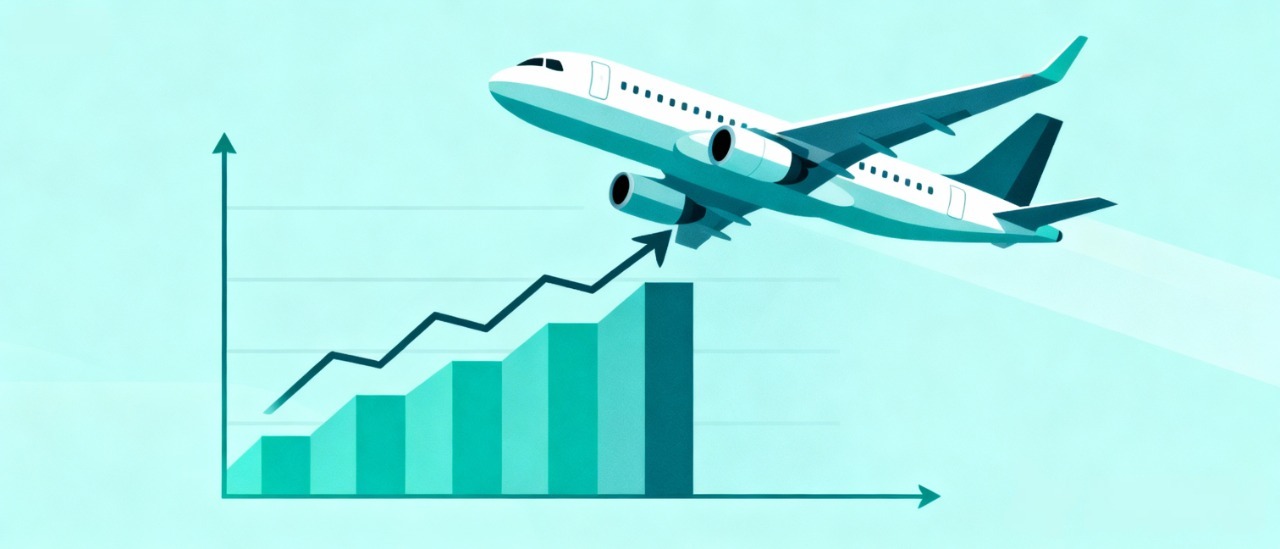
Peak Season Pricing Reality
December has the highest demand for flights to China with 8% price increases on average. But the real pricing nightmare is Chinese New Year.
During Chinese New Year (dates vary, usually late January to mid-February), massive numbers of people migrate in what’s known as ‘Chunyun,’ making tickets extremely hard to buy. We’ve seen prices triple and flights sell out weeks in advance. During Chinese holidays, not only are tourist spots crowded, but hotel prices spike dramatically, and flights or train tickets sell out weeks before.
Avoid these periods:
- Chinese New Year: end of Jan – beginning of Feb (check annually as dates shift)
- National Day Golden Week: October 1-7
- Labor Day Holiday: May 1-3
During the 8-day Spring Festival holiday, border inspection agencies across Shanghai expected 662,000 entry and exit trips, averaging 83,000 per day. Arrive earlier during holidays—4 hours isn’t excessive for international departures.
Best value windows: March-April and September-October offer moderate weather, lower prices, and manageable crowds at tourist sites. These shoulder seasons provide the sweet spot for value-conscious travelers.
Direct Routes vs. Connections: Making the Right Call
Direct flights save time but cost more. Consider connections when:
1. Price difference exceeds $300: Tokyo or Seoul layovers often cost $300-500 less. Example: San Francisco to Shanghai direct costs $1,100 and takes 12 hours. San Francisco to Tokyo to Shanghai costs $750, takes 16 hours total, but splits into manageable segments with opportunity to explore Tokyo.
2. You want to explore an Asian hub: ANA allows one-way redemptions and open-jaws, typically offering more competitive award redemption rates when flying via Japan to China. JAL and ANA offer Japan stopovers at excellent redemption rates.
3. Direct flights have terrible timing: Sometimes connections mean sleeping on planes instead of arriving at 3 AM when hotels won’t let you check in early.
4. Breaking up exhausting long journeys: 16-hour direct flights exhaust many travelers. Two 8-10 hour segments with a day exploring Tokyo or Seoul refreshes you for China arrival.
Major Direct Routes Available in 2025
From North America:
- United Airlines: San Francisco to Shanghai/Beijing (daily), Los Angeles to Shanghai (daily)
- Delta Air Lines: Seattle to Shanghai (daily), Detroit to Shanghai (daily)
- Hainan Airlines: Seattle to Beijing, Los Angeles to Chengdu, Los Angeles to Chongqing
- Air Canada: Vancouver to Shanghai/Beijing, Toronto to Shanghai
From Europe:
- Hainan Airlines: London Heathrow/Manchester/Edinburgh to Beijing and Haikou (operates direct from multiple UK airports)
- China Eastern: Frankfurt, London Heathrow, Paris, Amsterdam, Rome, Madrid to Shanghai year-round
- Lufthansa, Air France, British Airways: Multiple European cities to Beijing/Shanghai
From Asia-Pacific:
- Multiple carriers from Tokyo, Seoul, Singapore, Bangkok, Kuala Lumpur, Hong Kong
- Qantas, Air New Zealand, Virgin Australia from Australian cities
- Frequent daily services from major Asian hubs
Country‑Specific Travel‑Origin Guidance
For US Travelers
West Coast: West Coast travelers enjoy the most direct flight options. San Francisco offers three daily nonstop routes on United to Beijing and Shanghai. Los Angeles connects directly to Shanghai, Chengdu, and Chongqing. Seattle offers daily service to Shanghai.
East Coast reality: With Russian airspace closed to US carriers, New York to Beijing requires either West Coast positioning or Asian hub connections. FlyerTalk users report: “Flying from the East Coast to China very difficult, if not impossible” for direct routes.
Best strategy for East Coast travelers: Fly positioning flight to San Francisco or Los Angeles, or connect through Tokyo, Seoul, or Hong Kong. Often the connection route costs less despite adding a segment. Chinese carriers offer better pricing from East Coast due to Russian airspace access.
Midwest travelers: Chicago lacks direct China flights currently. Position to West Coast gateways or connect through Asian hubs for best pricing and schedules.
What Airlines Fly US-China Nonstop?
According to the latest information (FlightConnections, Google Flights), the following nonstop flights between the United States and China are currently operational:
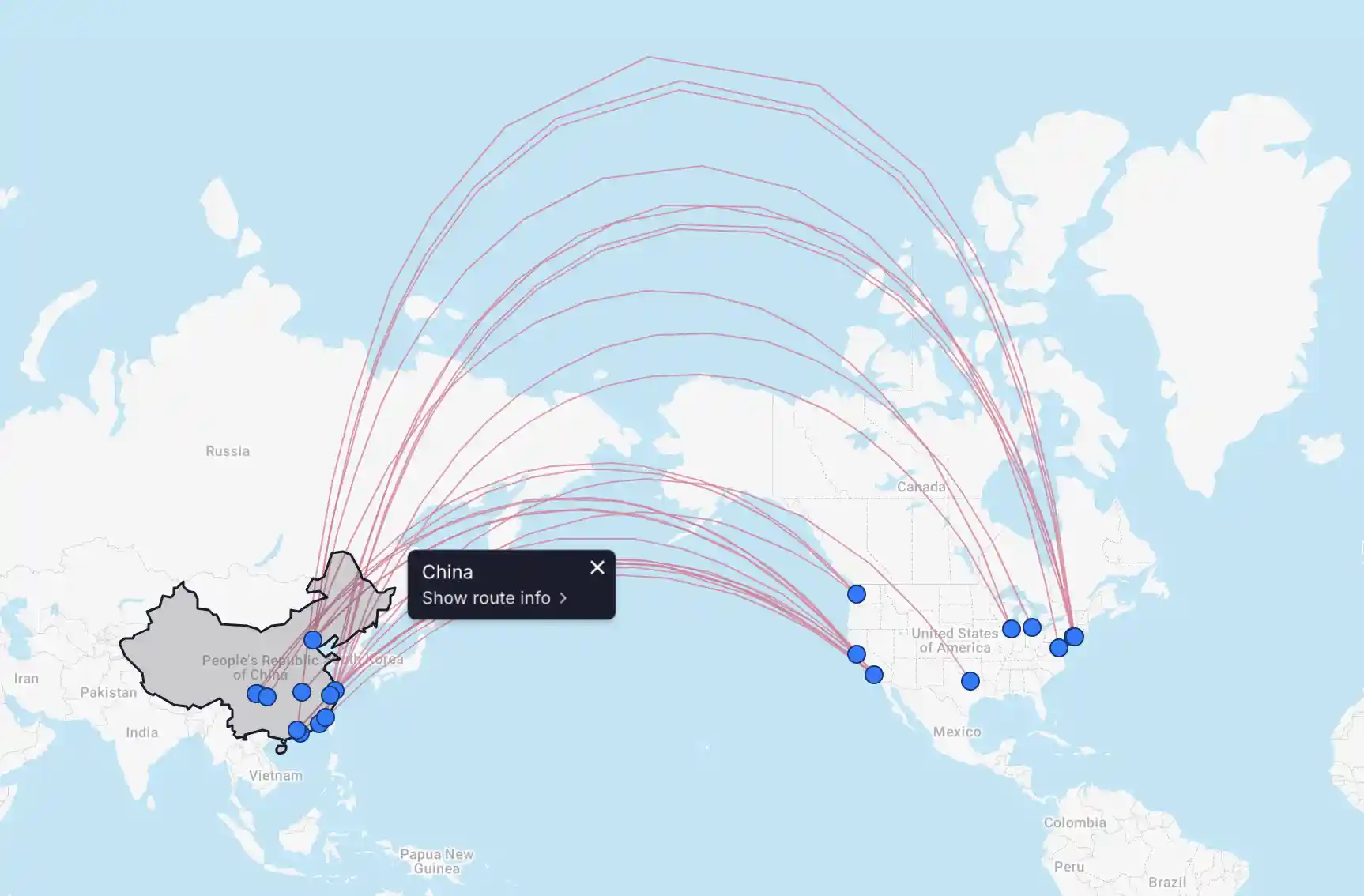
Airline | Nonstop Routes (USA ⇄ China) |
|---|---|
Air China | Los Angeles (LAX) – Beijing (PEK), Los Angeles (LAX) – Shenzhen (SZX), New York (JFK) – Beijing (PEK), San Francisco (SFO) – Beijing (PEK), Washington D.C. (IAD) – Beijing (PEK) |
China Eastern | Los Angeles (LAX) – Shanghai (PVG), New York (JFK) – Shanghai (PVG), San Francisco (SFO) – Shanghai (PVG) |
China Southern | Los Angeles (LAX) – Guangzhou (CAN), New York (JFK) – Guangzhou (CAN), San Francisco (SFO) – Guangzhou (CAN), San Francisco (SFO) – Wuhan (WUH) |
Hainan Airlines | Seattle (SEA) – Beijing (PEK) |
Chongqing Airlines | Seattle (SEA) – Chongqing (CKG) |
Sichuan Airlines | Los Angeles (LAX) – Hangzhou (HGH), Los Angeles (LAX) – Chengdu Tianfu (TFU) |
Xiamen Airlines | Los Angeles (LAX) – Xiamen (XMN), New York (JFK) – Fuzhou (FOC), New York (JFK) – Hangzhou (HGH) |
American Airlines | Dallas/Fort Worth (DFW) – Shanghai (PVG) |
Delta Air Lines | Detroit (DTW) – Shanghai (PVG), Los Angeles (LAX) – Shanghai (PVG), Seattle (SEA) – Shanghai (PVG) |
United Airlines | Chicago (ORD) – Beijing (PEK), Chicago (ORD) – Shanghai (PVG), Los Angeles (LAX) – Shanghai (PVG), Los Angeles (LAX) – Beijing (PEK), Newark (EWR) – Beijing (PEK), Newark (EWR) – Shanghai (PVG), San Francisco (SFO) – Shanghai (PVG), San Francisco (SFO) – Chengdu (CTU), San Francisco (SFO) – Beijing (PEK), Washington D.C. (IAD) – Beijing (PEK) |
Routes are subject to schedule adjustments by airlines.
For European Travelers
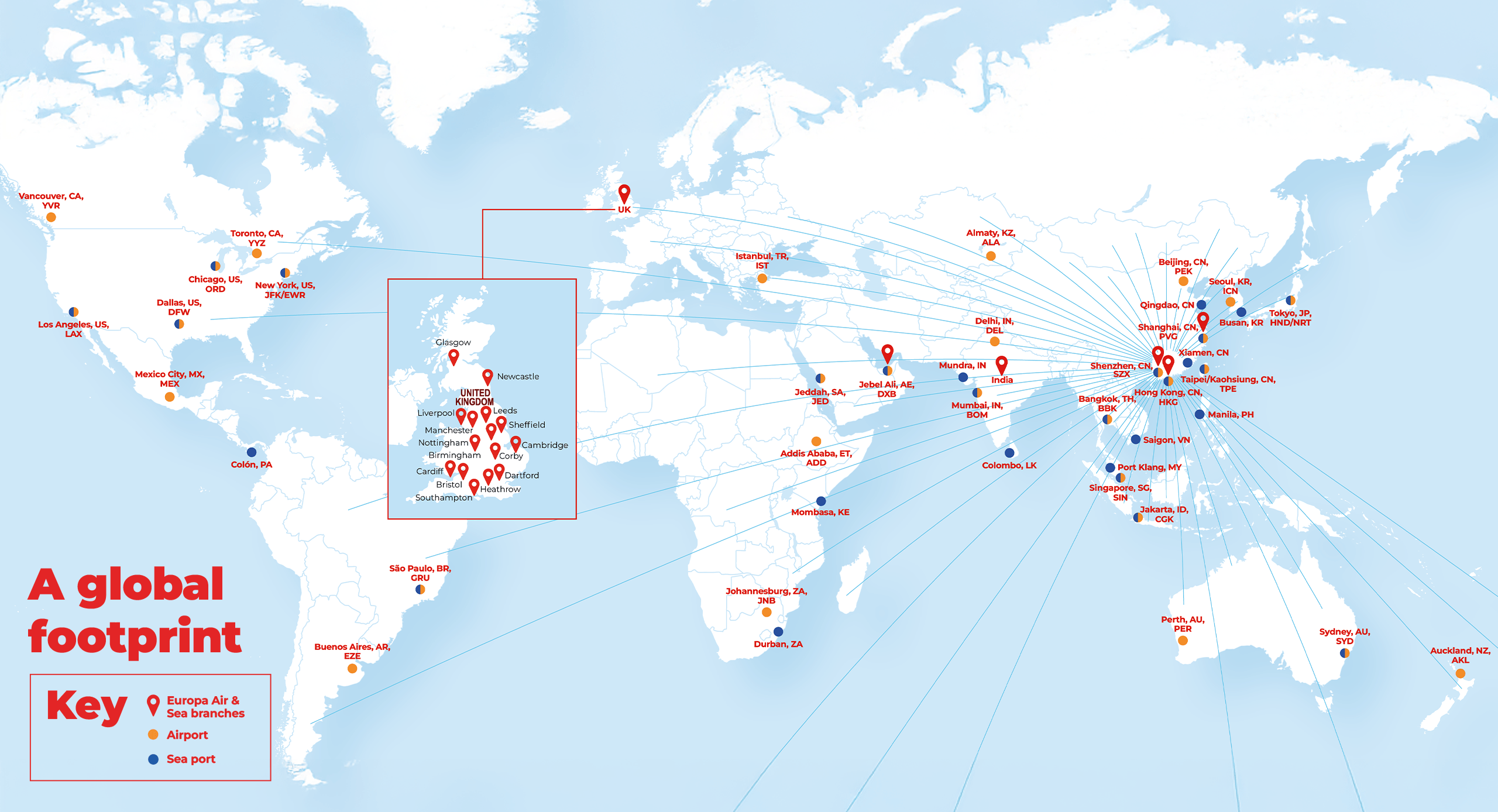
European travelers benefit from extensive direct flight networks. London, Paris, Frankfurt, Amsterdam, and Rome all connect directly to Shanghai and Beijing.
Hainan Airlines offers competitive pricing from UK airports including London Heathrow, Manchester, and Edinburgh. Trip.com consistently shows better prices than Western OTAs for European-China routes.
Budget tip: Eastern European departure points (Budapest, Warsaw, Prague) sometimes offer significantly lower fares with one connection versus direct flights from London or Paris. Consider positioning flights if savings exceed €200.
UK travelers: Manchester and Edinburgh offer direct Hainan Airlines flights to Beijing, avoiding London’s higher airport taxes and congestion.
For Asia-Pacific Travelers
Australian travelers face limited direct flight capacity. Qantas and China Eastern serve Sydney-Shanghai and Melbourne-Shanghai routes. Singapore, Bangkok, and Kuala Lumpur serve as excellent connection hubs with multiple daily flights to Chinese cities. Often cheaper than direct flights with better schedule flexibility.
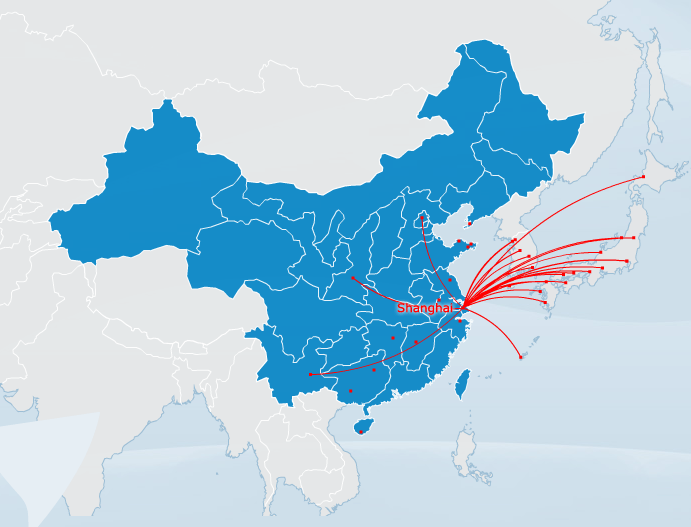
Japanese and Korean travelers enjoy the most convenient access with dozens of daily flights from Tokyo, Osaka, Seoul, and Busan to multiple Chinese cities. Short flight times (2-4 hours) make China an easy weekend destination.
Southeast Asian travelers: Bangkok, Singapore, Kuala Lumpur, and Manila all offer excellent connectivity to Chinese cities with multiple daily departures on various carriers. Budget carriers like AirAsia occasionally offer promotional fares.
For Canadian Travelers

Vancouver offers better China connectivity than Toronto. Air Canada operates Vancouver-Beijing service versus less frequent Toronto routes.
Many Canadian travelers find better pricing flying from Seattle (2.5 hours from Vancouver) given United’s extensive China network from Seattle with daily flights to Beijing and Shanghai.
Toronto travelers: Consider positioning to Vancouver or connecting through US West Coast gateways. Direct Toronto-Shanghai flights exist but command premium pricing.
Special Insights & Less‑Covered Angles

The Russian Airspace Factor Nobody Discusses
This changes everything about US-China flights. Chinese carriers using Russian airspace save 2-3 hours flight time and significant fuel costs. United’s CFO confirmed: “Chinese carriers can fly to the U.S. over Russia which is a much less circuitous route. We can’t.”
This explains why Chinese carrier economy fares run $200-400 cheaper than American carriers. It’s not service quality—it’s geography and geopolitics. Chinese carriers save massive operational costs flying the shorter polar route over Russia.
For travelers, this means:
- Chinese carriers from North America arrive faster (2-3 hours less)
- Lower fuel costs translate to lower ticket prices
- US carriers must route around Russian airspace, adding flight time and cost
- European carriers also avoid Russian airspace, affecting their pricing
Points and Miles Strategy: Maximizing Value
Award flights to China offer incredible value when used correctly.
Alaska Airlines for Hainan Airlines: Alaska Mileage Plan works brilliantly for Hainan Airlines flights. Many credit card points transfer to Alaska Mileage Plan for redemptions. Los Angeles to Beijing roundtrip costs significantly less in miles than cash fares.
United MileagePlus: United Miles work for United’s China flights. San Francisco to Beijing round-trip costs 130,000 United miles plus about $70 in taxes and fees in Polaris business class—remarkable value when cash prices exceed $3,000.
ANA Mileage Club: ANA allows one-way redemptions and open-jaws with competitive award redemption rates when flying via Japan to China. Often better value than US carrier programs.
The strategy: Sign up for airline credit cards offering 40,000-60,000 bonus miles after minimum spend. Use that card to purchase your China ticket, earning additional miles. You’ve accumulated enough for domestic China flights at no extra cost.
Credit card opportunities: Chase Sapphire Preferred/Reserve, American Express Gold/Platinum, and airline-specific cards offer substantial signup bonuses transferring to airline partners for China redemptions.
High-Speed Rail as Flight Alternative
China’s high-speed rail network offers excellent alternatives to domestic flights. Beijing to Shanghai takes 5-7 hours by train versus 2-3 hours flying, but trains offer distinct advantages:
- Depart from city centers (no airport transit time saving 1-2 hours each end)
- No security hassles or baggage restrictions
- More comfortable seats than economy flights with ability to walk around
- More reliable schedules (fewer weather delays)
- Often similar or lower total travel time door-to-door for distances under 1,000km
Popular high-speed rail routes:
- Beijing-Shanghai: 4.5-7 hours
- Shanghai-Hangzhou: 1 hour
- Guangzhou-Shenzhen: 35 minutes
- Beijing-Xi’an: 4.5-6 hours
Book high-speed rail tickets 30 days in advance on Trip.com or China’s 12306 website. English interfaces available on both platforms.
Digital Payment Setup: Critical Pre-Flight Task
Download and configure WeChat and Alipay before your flight. This cannot be overstated—China’s digital payment dominance means cash becomes almost unusable in many situations.
Setup process:
- Download WeChat and Alipay apps while you have stable internet
- Register with foreign phone numbers
- Verify identity by uploading passport photos
- Link Visa/Mastercard to your accounts
Starting in 2025, WeChat and Alipay support binding Visa and Mastercard for direct QR code payments. Set this up with stable home internet—Chinese WiFi can be spotty, and VPNs complicate the process.
Why this matters: Coffee shops, restaurants, street vendors, taxis, train stations, and even some bathrooms prefer QR code payments. Many establishments don’t accept cash anymore.
Essential apps to install before departure:
- Trip.com for trains and hotels
- Alipay or WeChat for payments (primary payment methods in China)
- Amap for navigation (works without VPN unlike Google Maps)
- A reliable VPN if you need Google services, Gmail, or Western social media
- Didi for ride-hailing (Chinese equivalent of Uber)
- Pleco for Chinese dictionary and translation
Onboard Experience: What to Actually Expect
Economy Class Reality
Chinese carriers offer 31-33 inch seat pitch on most aircraft, comparable to international standards. USB ports available on newer planes. Two full meals and snacks typically included on long-haul flights, with both Chinese and Western options.
Meal quality surprises many passengers. China Eastern and Hainan serve regional Chinese specialties alongside standard Western options. Beverage service includes juices, coffee, tea, soft drinks, beer, and wine at no extra charge.
In-flight entertainment? Chinese carriers lag Western premium carriers significantly. Expect limited English-language content—maybe 10-20 Hollywood movies versus 100+ on Emirates or Singapore Airlines. Download your own entertainment before departure.
Cabin crew English proficiency varies dramatically. On popular international routes (US, Europe, Australia), you’ll find English-speaking crew. On Asian regional routes, communication can be challenging.
Business Class Worth It?
Business class elevates the experience dramatically. Hainan Airlines features fully flat beds in 1-2-1 layout ensuring direct aisle access on long-haul routes. China Eastern’s sliding doors create private suites rivaling Middle Eastern carriers.
Dining in business class includes multiple courses, often paired with wines. Air China and China Eastern serve Chinese wines, allowing travelers to savor regional selections alongside international labels.
We tell budget-conscious clients: save the money for experiences in China—$2,000 in price difference buys a lot of panda viewing and Yangshuo river cruises. Tell luxury travelers: Chinese business class offers incredible value, often costing 40% less than American carriers for similar flat-bed service.
Luggage Allowances and Restrictions
Checked Baggage:
- Economy class typically allows 1-2 pieces, each up to 23kg (50 lbs)
- Business class usually allows 2 pieces, each up to 32kg (70 lbs)
- Check your specific ticket—restrictions vary by route and fare class
Carry-on Rules:
- One carry-on bag plus one personal item (purse, laptop bag)
- Maximum dimensions typically 55cm x 40cm x 20cm (22″ x 16″ x 8″)
- Weight limit usually 5-10kg depending on carrier
Important restrictions:
- Power banks must be in carry-on luggage, not checked bags
- Liquids in carry-on limited to containers of 100ml or less, all fitting in one clear plastic bag
- Lighters and matches generally prohibited in both carry-on and checked baggage
Rules for international flights and Chinese domestic flights differ significantly. Large liquid bottles must be packed separately from your luggage and inspected visually by airline staff at check-in for domestic flights.
Travel Insurance: Why It Matters
It is recommended that you purchase travel insurance for your trip in case of emergencies, though there are no vaccination requirements for entering China.
What good travel insurance covers:
- Flight cancellations and delays (common during Chinese holidays)
- Medical emergencies (hospitals in China can be expensive for foreigners)
- Lost or delayed baggage
- Trip interruption (if you need to return home unexpectedly)
- Emergency evacuation
Policies covering trip interruption have saved our clients thousands when unexpected family emergencies required immediate returns home. The $100-200 insurance cost becomes irrelevant when it saves you $3,000 in last-minute flight changes.
Environmental and Health Considerations
Carbon Footprint Reality
A round-trip flight from New York to Beijing generates approximately 4 tons of CO2 per passenger. Los Angeles to Shanghai produces about 3.2 tons. These figures equal the annual carbon footprint of an average person in many developing countries.
Consider carbon offset programs offered by airlines, though we acknowledge effectiveness varies dramatically. Direct flights consume less fuel than connections from an environmental perspective—one 12-hour flight beats two 7-hour flights in fuel efficiency.
Chinese carriers using Russian airspace also reduce environmental impact through shorter flight paths and lower fuel consumption.
Managing Jet Lag Effectively
China spans one official time zone (GMT+8) despite its geographic width covering what should be 4-5 time zones. Beijing is:
- 13 hours ahead of New York (16 hours during US daylight saving time)
- 16 hours ahead of Los Angeles (15 hours during US daylight saving time)
- 7 hours ahead of London (8 hours during UK summer time)
- 2 hours behind Sydney
Proven jet lag strategies:
- Pre-flight adjustment: Start shifting sleep schedule 2-3 days before departure. Go to bed 1-2 hours earlier if flying east.
- Hydration strategy: Aim for 8 oz water per hour during flight. Avoid alcohol which exacerbates dehydration and worsens jet lag recovery. Coffee okay in moderation.
- Light exposure: Upon arrival, seek sunlight exposure during local daytime hours. This resets your circadian rhythm faster than anything else.
- Meal timing: Eat meals on China time as soon as you board your flight. This signals your body to adjust.
- First day strategy: Force yourself to stay awake until local evening time, even if exhausted. Resist napping. This resets your body clock in 1-2 days instead of 4-5 days.
- Melatonin consideration: Some travelers find 3mg melatonin helpful taken at bedtime China time. Consult your doctor first.
Common Flight Booking Mistakes to Avoid
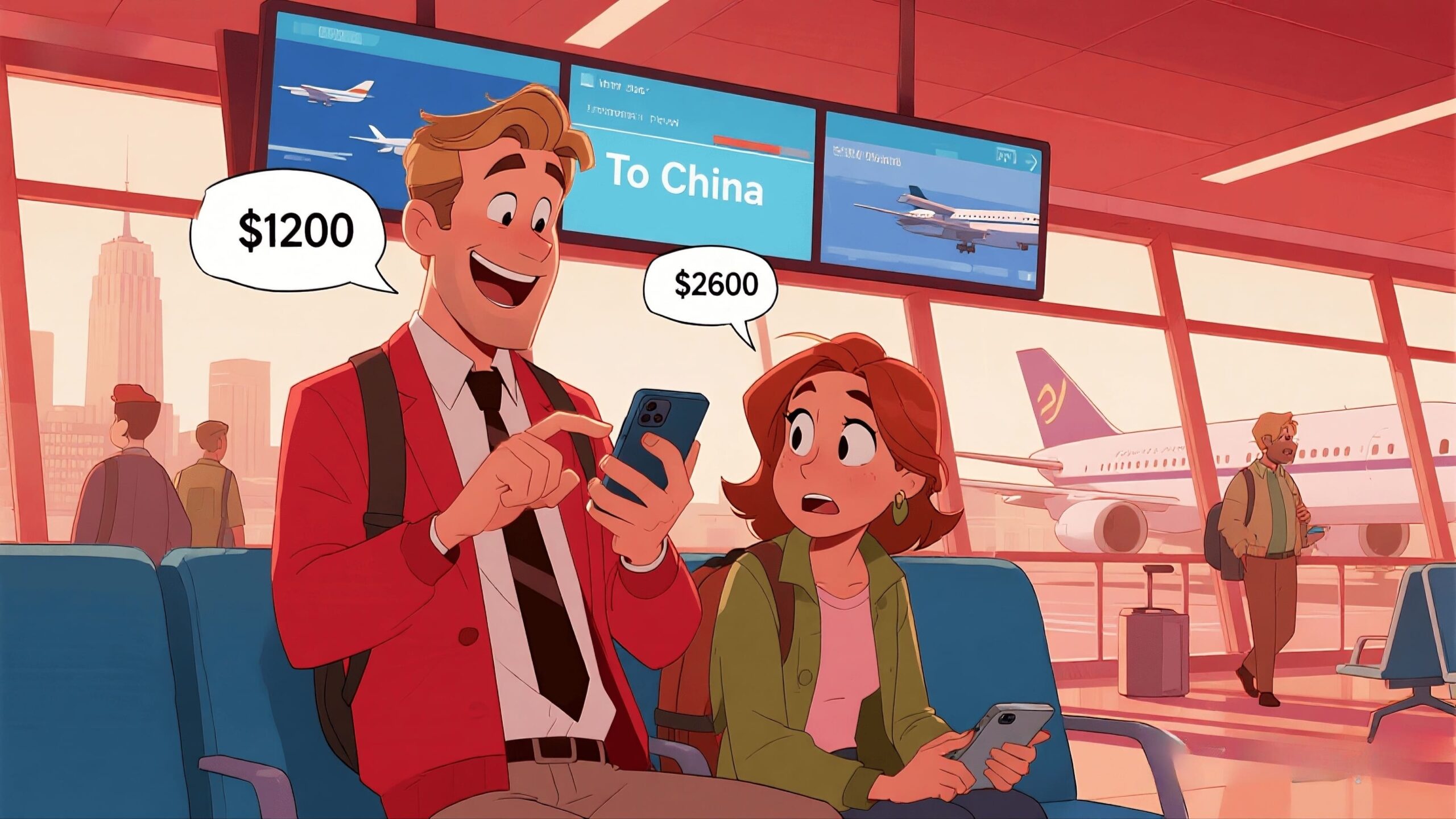
Mistake 1: Booking too far in advance Airlines don’t release best fares 6 months out. The 45-60 day window consistently delivers better pricing. Booking earlier often means paying $200-400 more for identical seats.
Mistake 2: Ignoring Chinese booking platforms We’ve never found a case where Western platforms beat Chinese platforms on China routes. Always compare Trip.com pricing before booking. The savings average $150-300 per ticket.
Mistake 3: Assuming visa-free means no restrictions The 30-day visa-free stay ends at midnight on the 30th day after entry. Overstaying triggers fines of RMB 500 per day up to RMB 10,000, plus potential detention. The 240-hour transit policy requires proof of onward travel to a third country.
Mistake 4: Tight connection times Don’t book connections with less than 3 hours at Chinese airports. Even efficient processing creates queues during peak periods. Beijing Daxing sometimes operates one transit visa counter. Even with 5-10 minute processing per person, queues add delays.
Mistake 5: Not printing boarding passes Most Chinese airports require physical boarding passes for international flights, even if your home country accepts mobile passes. Print them at home or plan to use airport kiosks, which sometimes have confusing Chinese interfaces.
Mistake 6: Forgetting about Chinese holidays During Chinese New Year, National Day, and Labor Day, tourist spots become overwhelmed, hotel prices triple, and flights sell out weeks before. Plan around these periods or embrace the crowds with proper preparation.
Mistake 7: Booking one-way tickets without onward proof Airlines check onward travel proof before boarding for visa-free entries. Screenshot confirmations from email showing your name, dates, and destinations. Arriving without proof means denied boarding.
Mistake 8: Neglecting travel insurance “It won’t happen to me” thinking leaves travelers vulnerable. Flight cancellations, medical emergencies, and lost luggage happen more often than expected. The $100-150 policy cost becomes irrelevant when preventing $2,000-5,000 losses.
Airport-Specific Intelligence
Shanghai Pudong (PVG): Both Terminal 1 and Terminal 2 stay open 24/7. Lounges and capsule hotels available for overnight stays. International airlines like Lufthansa, Emirates, and Delta send SMS or app notifications for flight updates if you sign up in advance.
Terminal 2 serves most international flights, while Terminal 1 primarily handles domestic and some regional international flights. Free shuttle buses connect terminals but allow 30 minutes for transfers.
Beijing Capital International Airport: Terminal 3 is massive—allow extra time for walking. The airport express train (Airport Line) connects to downtown in 25-30 minutes, costing 25 RMB. Taxis to central Beijing cost 80-120 RMB depending on destination and traffic.
Beijing Daxing International Airport: The starfish design means shorter walking distances than Capital Airport despite impressive size. Everything designed for efficient flow with biometric systems cutting immigration time. Airport express to downtown takes about 30 minutes.
Guangzhou Baiyun International Airport: Ranked #1 in Skytrax’s 2025 China airport rankings. Efficient layout with clear bilingual signage. Metro Line 3 connects to downtown Guangzhou. Excellent connection hub for southern China destinations.
Chengdu Tianfu International Airport: Opened in 2021, this modern facility ranks in Skytrax’s top 10 Chinese airports. Panda-themed artwork everywhere delights travelers. Excellent starting point for western China exploration.
Loyalty Programs and Status Benefits
Chinese carriers operate their own frequent flyer programs with valuable benefits for regular travelers:
China Eastern Airlines Eastern Miles: Partners with SkyTeam alliance. Status members enjoy priority check-in, extra baggage allowance, and lounge access. Points transfer from American Express Membership Rewards in some regions.
Air China PhoenixMiles: Star Alliance member with global partnership network. Easier to earn status than US carriers with lower thresholds. Silver status achievable with 2-3 China trips annually.
Hainan Airlines Fortune Wings Club: Not part of major alliances but partners with Alaska Airlines Mileage Plan. Alaska miles can book Hainan flights at excellent redemption rates.
For occasional travelers, credit card points often provide better value than airline-specific loyalty programs. Chase Ultimate Rewards, American Express Membership Rewards, and Citi ThankYou Points all transfer to multiple airline partners for China redemptions.
Frequently Asked Questions

Q: Can I change my flight after booking?
Most Chinese carriers charge $50-300 change fees plus fare differences. Premium tickets offer more flexibility. Refundable tickets cost 40-60% more than non-refundable fares. Check your fare rules before purchasing—”Basic Economy” or similar restricted fares may prohibit all changes.
Q: What happens if I miss my connection in China?
On separate tickets, you’re responsible for rebooking at your own expense. On through-tickets purchased together, airlines must accommodate you on next available flights at no charge. This is why booking through-tickets sometimes justifies higher costs despite seeming more expensive initially.
Q: Are meals included on flights to China?
Economy class typically includes two full meals and snacks on long-haul international flights operated by Chinese airlines. Domestic flights within China may only offer paid options unless you’re flying premium cabins. Always check your specific booking confirmation.
Q: Can I bring electronics through Chinese customs?
Personal electronics for your own use pass without issue. Personal articles carried by inbound passengers within the limitation set by Customs are exempted from duty. One laptop, one phone, one tablet creates no problems. Bringing five new iPads might raise questions about commercial intent and tax liability.
Q: How early should I arrive at Chinese airports for international flights?
We recommend 3 hours for international departures from Chinese airports. During holidays like Spring Festival when Shanghai expects 83,000 entry/exit trips per day, arrive 4 hours before departure—it’s not excessive. Check-in counters often close 40-60 minutes before departure, and security lines can be lengthy.
Q: Do Chinese carriers fly Boeing or Airbus?
Hainan Airlines operates Boeing 737 and 787 series aircraft and Airbus 330. Most Chinese carriers fly mixed fleets of both manufacturers. China is also introducing domestically-produced COMAC C919 aircraft on select domestic routes, though international travelers rarely encounter these yet.
Q: Is travel insurance necessary for China trips?
It is recommended though there are no vaccination requirements. We always recommend it for international travel—flight cancellations during Chinese holidays, medical emergencies requiring expensive hospital treatment, and lost luggage happen more often than travelers expect. Policies covering trip interruption have saved our clients thousands.
Q: Which passport type qualifies for visa-free entry?
Only ordinary passports qualify for the 30-day visa-free policy. Diplomatic, official, or service passports require standard visa applications through Chinese embassies/consulates regardless of nationality.
Q: Can I extend my visa-free stay once in China?
No. The 15-day, 30-day, or 240-hour visa-free periods cannot be extended. If you overstay, you face fines of RMB 500 per day (up to RMB 10,000), possible detention, and future entry bans. Plan your departure carefully.
Q: What if my connecting flight to a third country gets cancelled during my 240-hour transit?
Contact your airline immediately for rebooking. You must maintain proof of onward travel to a third country within 240 hours. If rebooking extends beyond 240 hours, contact local Public Security Bureau Entry-Exit office for guidance. This is why travel insurance matters.
Q: Do I need a COVID test or health declaration for China in 2025?
As of November 2025, China has eliminated most COVID-19 entry requirements. No PCR tests, antigen tests, or vaccination certificates required for entry. Health declaration forms may still be required at some ports of entry. Check current requirements 2-3 weeks before travel as policies can change.
Q: Can I use my credit card in China or do I need cash?
Major hotels, airports, and some tourist restaurants accept Visa and Mastercard. However, most establishments prefer WeChat Pay or Alipay via QR codes. Starting in 2025, both platforms support foreign card binding for direct payments. Set this up before your trip. Carry some cash (RMB 500-1,000) as backup, but expect to use digital payments 90% of the time.
Final Thoughts: Your China Flight Strategy

China’s reopening creates unprecedented opportunities for international travelers. In the third quarter of 2025 alone, foreign nationals made 7.246 million visits under visa-free policies—a 48.3% year-on-year increase proving China’s genuine commitment to welcoming travelers.
The visa-free policies simplify everything. Travelers who never imagined visiting China without complex embassy appointments and visa applications now land, explore for 10-30 days depending on nationality, and depart seamlessly. The 240-hour transit visa offering nearly 11 days transforms China from a distant dream into an accessible reality.
Your flight strategy should balance cost, comfort, and convenience. We’ve found the sweet spot through years of testing:
- Book 50-60 days before departure – This window consistently delivers the best pricing, saving $200-400 compared to early or last-minute bookings.
- Always check Trip.com before booking – We’ve never found Western platforms beating Chinese platforms on China routes. The savings average $150-300 per ticket, sometimes reaching $400 when you include direct airline website comparisons.
- Choose entry city based on your itinerary, not airport reputation – Flying into Chengdu for Sichuan exploration beats routing through Shanghai then backtracking. Match your arrival city to your first destination.
- Understand the Russian airspace factor – Chinese carriers save 2-3 hours flight time and significant fuel costs using Russian airspace. This isn’t about service quality—it’s geography and geopolitics explaining $200-400 price differences from American carriers.
- Prepare digital payment apps before boarding – Cannot overstate this. China’s digital payment dominance means cash becomes almost unusable. Set up WeChat and Alipay with foreign card binding before departure using stable home internet.
- Consider connections strategically – When price differences exceed $300, connections through Tokyo, Seoul, or Singapore often provide better value with opportunities for brief explorations. Two shorter flights beat one exhausting 15-hour journey for many travelers.
Chinese carriers have dramatically improved service quality over the past decade. Hainan Airlines achieved the only Chinese carrier spot in the global top 10 for 2025. China Eastern and Air China deliver solid experiences at 30-40% lower prices than Western carriers. Don’t dismiss them based on outdated perceptions from 2010-2015.
The aviation infrastructure supports China’s reopening momentum. United operates 21 weekly flights from the US, while Chinese carriers plan 127 weekly flights. More capacity means better prices and more flight options than we’ve seen since 2019. Competition among carriers benefits travelers through improved pricing and service.
Start planning 60-90 days before your desired departure date. Set price alerts on Google Flights and Skyscanner. Compare Chinese and international platforms religiously—the extra 10 minutes of research saves $200-400 per ticket. Choose your entry city carefully based on your itinerary. Allow extra time for first-time airport navigation, especially if using the transit visa program.
China rewards travelers who plan thoughtfully but remain flexible when things inevitably differ from expectations. Your flight there marks just the beginning of an adventure reshaping how you view travel, culture, and human connection. The Middle Kingdom awaits with experiences ranging from ancient dynasties to cutting-edge technology, from serene countryside to vibrant megacities.
The infrastructure exists. The policies welcome you. The prices remain competitive. The time is now.
Ready to explore? Your journey starts with clicking that “book” button—but only after checking Trip.com one more time.
Need personalized China travel planning beyond flight booking? Contact Travel China With Me for expert itinerary design, verified flight booking assistance, on-ground support navigating Chinese airports, and local guidance that transforms a good trip into an unforgettable journey. We’ve guided thousands of international travelers through their first China experiences, and we’re ready to help you craft yours.


